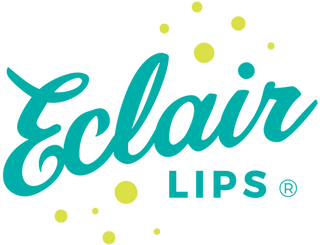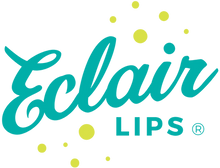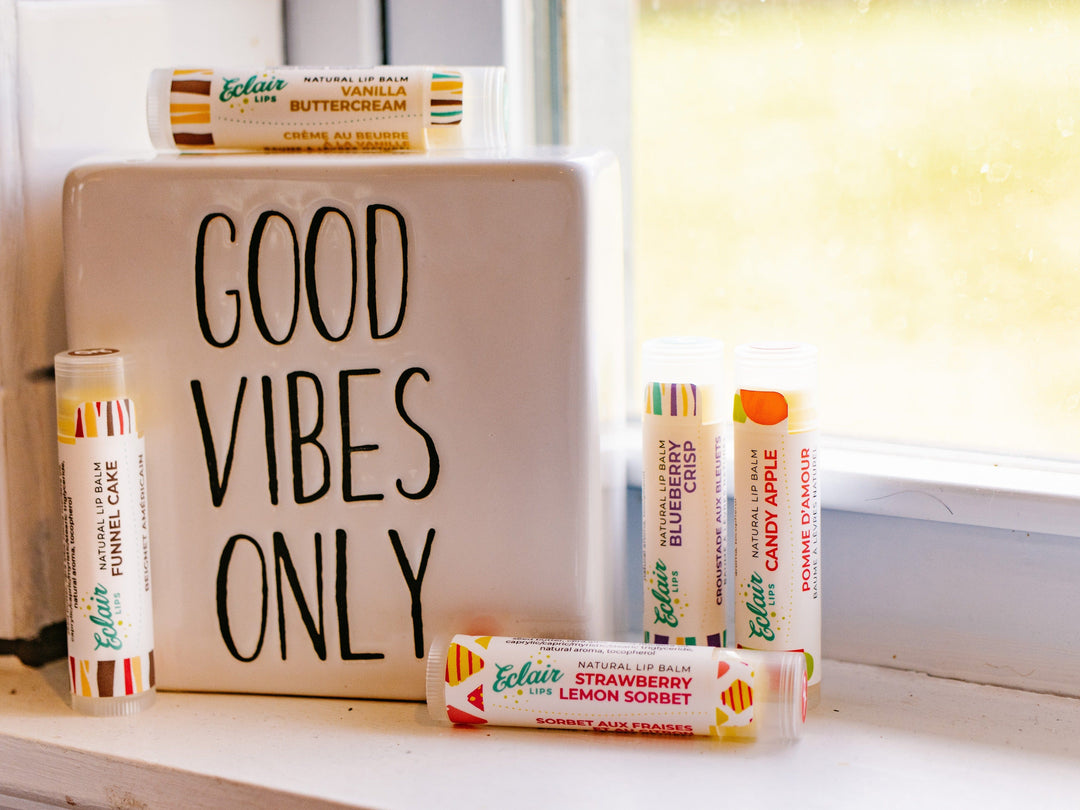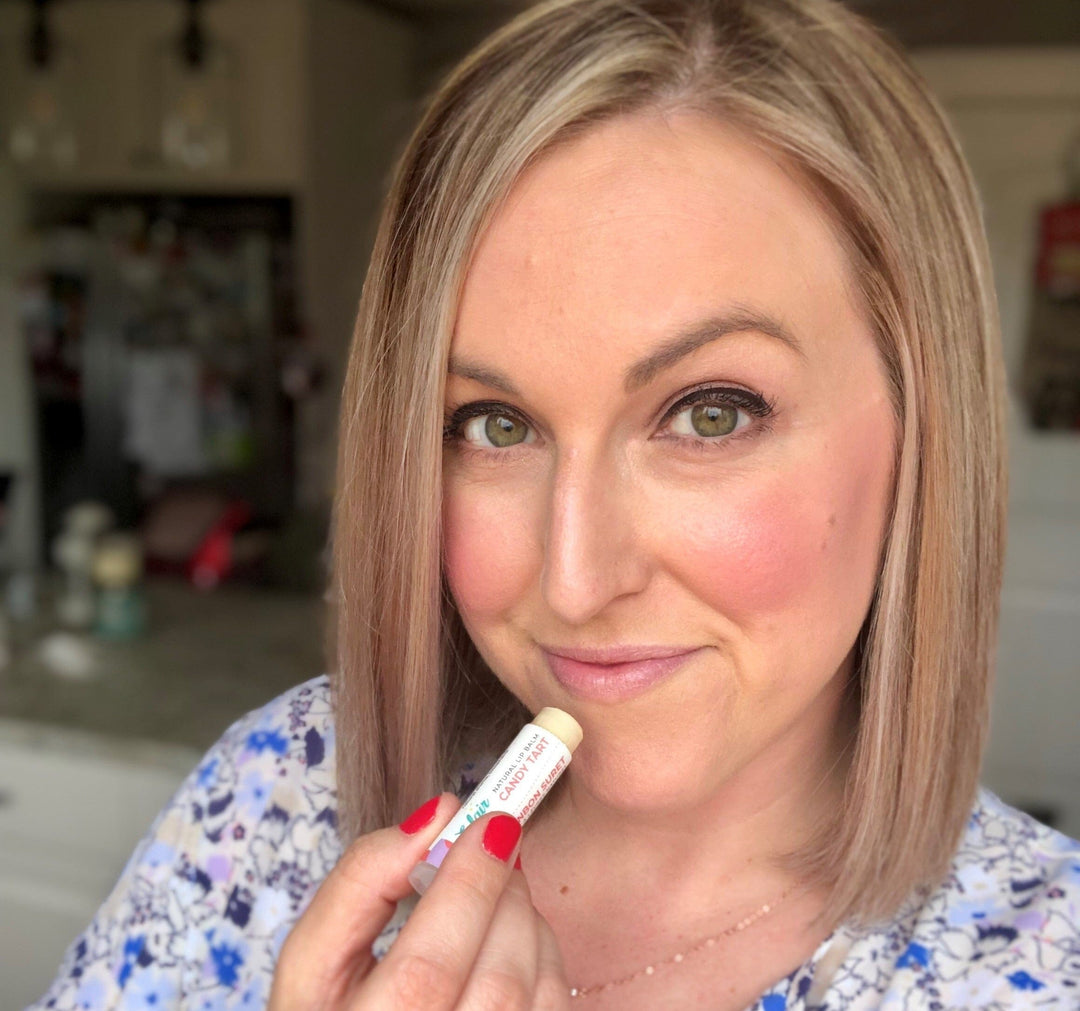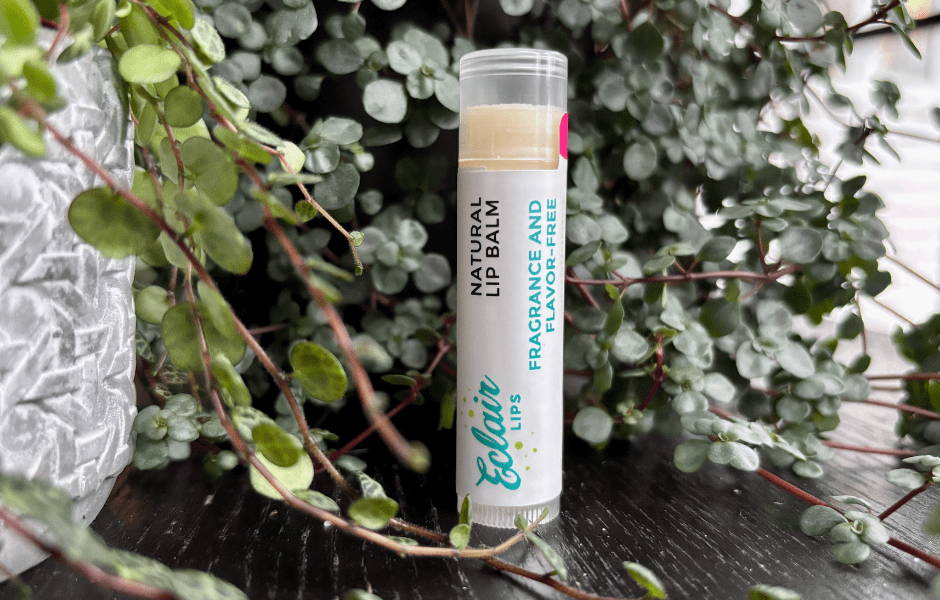Best Lip Balm for Dry Lips Dermatologist Professionals Actually Recommend
What Dermatology Research Shows About Choosing the Right Lip Balm
If you've been searching "best lip balm for dry lips dermatologist" at 2 AM while your lips feel like sandpaper, you're definitely not alone. After treating countless cases of contact dermatitis, allergic reactions, and chronically chapped lips, dermatology professionals have pretty strong opinions about which lip balm ingredients actually work and which ones make things worse.
The best lip balm dermatologist professionals point patients toward isn't always the fanciest or most expensive option on the shelf. In fact, dermatological research consistently shows that simple, proven formulas with short ingredient lists and gentle bases work better than products loaded with trendy botanicals or cooling sensations.
When dermatologists treat patients dealing with persistently dry lips, they look for balms built on evidence-based ingredients like cocoa butter, coconut oil, and beeswax, which create a balanced formula that protects, hydrates, and feels comfortable without introducing unnecessary irritants.
This post breaks down what dermatologists actually look for in a lip balm, which ingredients earn their approval, and how to choose a balm that won't make your lips worse. We'll cover the science, bust some myths, and give you practical advice for making smart choices.

Quick Takeaway
- Dermatologists recommend balms with simple, proven ingredients like cocoa butter, beeswax, and coconut oil
- Avoid irritants like menthol, camphor, artificial fragrances, and phenol, which can dry lips further
- Expensive doesn't mean dermatologist-approved; focus on formulation over packaging
- Fragrance-free options with short ingredient lists are safest for sensitive lips
Contents
Why Dermatologists Pay Close Attention to Lip Balm Ingredients
Medical professionals focus on safety, efficacy, and non-irritating ingredients because they see the worst-case scenarios that come from poorly formulated products.
Dermatological research shows that lips are especially vulnerable to irritation because the skin there is thinner than the rest of your face, with no oil glands to protect it. That means anything you put on your lips has direct access to sensitive tissue, and irritating ingredients that might be tolerable elsewhere on the body can cause stinging, peeling, or even cracking when applied to lips.
Dermatologists also treat patients who cycle through dozens of products, convinced they're "addicted" to lip balm, when the real issue is that their current balm contains ingredients that dry lips out or trigger mild allergic reactions.
The fix isn't to stop using balm altogether (that's actually a myth we'll cover later), it's to switch to a formula that protects and soothes instead of irritating.
That's why dermatology professionals emphasise evidence-based choices. They want ingredients with proven safety records, minimal allergen risk, and a long history of effective use. Flashy marketing claims don't impress them, but solid formulation does.
What Makes a Lip Balm Earn Dermatologist Approval
The best lip balm dermatologist professionals recommend is built on evidence-based ingredients: proven occlusives that seal in moisture, gentle emollients that soften and smooth, and minimal allergen risk.
Dermatologists aren't swayed by trendy buzzwords or expensive packaging. They look for formulas that work consistently and safely across different skin types.
Three ingredients show up repeatedly in dermatologist recommendations: cocoa butter, coconut oil, and beeswax. This trio creates a balanced formula that protects, hydrates, and feels comfortable on lips without introducing unnecessary irritants.
Cocoa butter is recognised by health authorities as a safe and effective emollient. Dermatological research shows it melts at body temperature, creating a creamy, cushiony layer that stays put on lips.
Coconut oil is lightweight, non-comedogenic (meaning it won't clog pores around your mouth), and absorbs quickly to soften dry patches.
Beeswax acts as a natural occlusive, forming a protective barrier that locks in moisture and shields lips from wind, cold, and environmental stress.
When these three ingredients work together in a balanced ratio, the result is a lip balm that glides on smoothly, feels comfortable for hours, and doesn't need constant reapplication.
Dermatologists appreciate this kind of simplicity because it reduces the chance of irritation or allergic reaction. If you're looking for a gentle option that fits these criteria, a fragrance-free balm built on these core ingredients is a solid choice.
The best balm isn't the one with the longest ingredient list or the most exotic botanicals. It's the one that does its job reliably, without making your lips worse.

Ingredients Dermatologists Trust and What to Avoid
Dermatologists recommend ingredients with strong safety profiles and proven effectiveness. Here's what they look for, and what they tell patients to skip.
Ingredients Dermatologists Recommend
Cocoa butter (Theobroma Cacao Seed Butter) is an FDA-recognised skin protectant. It forms a thick, protective layer on lips and has been used safely for decades. Dermatological research shows it's effective at reducing transepidermal water loss, which is the main cause of chapped lips.
Coconut oil (Cocos Nucifera Oil) is low on the comedogenic scale, meaning it's unlikely to clog pores or cause breakouts around the mouth. It's lightweight, absorbs quickly, and provides instant comfort on dry lips.
Beeswax (Cera Alba) is a natural occlusive that creates a breathable barrier. It doesn't trap bacteria or suffocate skin, but it does seal in moisture and protect against harsh weather. Dermatologists often recommend beeswax-based balms for patients dealing with severe chapping or winter dryness.
Tocopherol (Vitamin E) acts as an antioxidant that helps oils and butters stay fresh longer. It also supports skin health and is generally well-tolerated.
Ingredients Dermatologists Tell You to Avoid
Artificial fragrances are one of the most common culprits behind contact dermatitis and allergic reactions. Dermatological research on cosmetic allergies consistently points to fragrance as a top trigger. Even if a balm smells nice, fragrance can cause redness, peeling, or stinging on sensitive lips.
Menthol and camphor give a cooling sensation that many people mistake for "working." In reality, they're irritants. Dermatologists warn that these ingredients can dry out lips further and create a cycle where you apply more balm, experience more irritation, and never actually get relief.
Phenol and salicylic acid are sometimes added to exfoliate or "medicate" lips, but they're too harsh for delicate lip tissue. Dermatologists see patients with chemical burns from balms containing these ingredients, especially when used on already cracked skin.
Untested botanicals sound natural and harmless, but essential oils like peppermint, eucalyptus, or citrus can cause photosensitivity (increased sun sensitivity) or allergic reactions. Dermatologists prefer simple, proven ingredients over trendy plant extracts that haven't been thoroughly studied for lip use.
Common Myths About Dermatologist-Approved Lip Balm
There are a lot of misconceptions about what dermatologists actually recommend. Let's clear up the biggest myths.
Myth: Expensive Equals Dermatologist-Approved
High price doesn't guarantee dermatologist approval. Some luxury balms cost $30 or more and contain the same basic ingredients as a $5 drugstore stick.
Dermatologists care about formulation, not packaging or brand prestige. A well-balanced balm with cocoa butter, beeswax, and coconut oil can be just as effective (or more so) than an expensive product loaded with unnecessary additives.
Myth: You Need a Prescription for Effective Lip Balm
Prescription balms are only necessary in specific cases, such as severe eczema, fungal infections, or chronic conditions like angular cheilitis.
For everyday dryness or chapping, over-the-counter balms with simple, proven ingredients work just fine. Dermatologists prescribe medicated products when there's an underlying medical issue, not because OTC balms are ineffective.
Myth: Natural Automatically Means Dermatologist-Approved
Natural ingredients can be gentle and effective, but they're not automatically safer. Essential oils, plant extracts, and botanical blends can cause allergic reactions or irritation just as easily as synthetic ingredients.
Dermatologists recommend balms based on safety and efficacy, not whether ingredients come from plants or labs. A fragrance-free balm with simple, proven ingredients often earns more dermatologist approval than a "natural" balm loaded with essential oils.
Truth: Simple, Proven Ingredients Work Best
Dermatologists consistently point patients toward balms with short ingredient lists, proven occlusives like beeswax or cocoa butter, and minimal fragrance or flavouring.
The best lip balm for dry lips dermatologist professionals recommend is not the one with the most exotic ingredients or the fanciest claims. It's the one that protects, hydrates, and doesn't cause irritation.
For everyday use, a reliable option with these characteristics is what you want to reach for.

Comparing Different Types of Lip Balm Options
Not all lip balms are created equal. Here's how dermatologist-recommended options stack up against popular commercial brands and natural handmade balms.
| Type | Ingredients | Safety Profile | Effectiveness | Best For |
|---|---|---|---|---|
| Dermatologist-Recommended | Cocoa butter, beeswax, coconut oil, tocopherol. Minimal fragrance or flavour. | High. Short ingredient list, low allergen risk, proven safety record. | High. Effective at protecting and hydrating without irritation. | Sensitive lips, eczema-prone skin, daily use, post-procedure care. |
| Popular Commercial | Petrolatum, mineral oil, lanolin, menthol, fragrance, synthetic waxes. | Varies. Some are safe, others contain irritants like menthol or artificial fragrance. | Moderate. May provide temporary relief but can cause irritation or dryness over time. | Quick fixes, emergency purchases, travel. |
| Natural Handmade | Shea butter, beeswax, plant oils, essential oils, natural flavours. | Varies. Can be gentle or irritating depending on formulation. Essential oils increase allergen risk. | Moderate to High. Well-formulated natural balms work well, but unbalanced recipes or strong essential oils can cause problems. | Preferences for natural ingredients, supporting small businesses, custom formulations. |
Key takeaways: Dermatologist-recommended balms prioritise safety and simplicity. They avoid common irritants and focus on ingredients with proven effectiveness.
Popular commercial balms are convenient and widely available, but many contain menthol, fragrance, or other additives that dermatologists advise against.
Natural handmade balms can be excellent if they use gentle, balanced formulas (like our balms at Eclair Lips, which focus on simple, effective ingredients). However, some natural products contain essential oils or untested botanicals that increase the risk of irritation or allergic reactions.
Real-World Situations Where Dermatologists Tailor Their Recommendations
Dermatologists adjust their lip balm recommendations based on individual needs and circumstances. Here's what they advise in common situations.
Eczema-Prone Skin
People with eczema or atopic dermatitis often experience flare-ups around the mouth and on the lips.
Dermatological research shows that fragrance-free balms with simple, soothing ingredients like cocoa butter and beeswax work best. You'll want to avoid balms with essential oils, menthol, or artificial fragrances, as these can trigger or worsen eczema symptoms.
Thick, occlusive formulas work best because they create a protective barrier that reduces moisture loss and shields sensitive skin from environmental irritants. A gentle option without any added fragrance can make a real difference.
Post-Procedure Care
After cosmetic procedures like laser treatments, chemical peels, or lip injections, dermatologists recommend gentle, non-irritating balms to support comfort during recovery.
The goal is to keep lips moisturised without introducing ingredients that could cause inflammation or slow down healing. Plain, fragrance-free balms with cocoa butter or petrolatum are ideal.
You'll want to avoid tinted balms, exfoliating formulas, or anything with active ingredients like retinol or salicylic acid during the healing period.
Pregnancy Safety
Pregnant individuals often worry about what's safe to use on their skin. Dermatologists reassure patients that most simple lip balms are safe during pregnancy. Ingredients like cocoa butter, beeswax, and coconut oil pose no known risk.
However, it's wise to avoid balms with retinoids (vitamin A derivatives), high concentrations of salicylic acid, or strong essential oils like rosemary or clary sage, which some sources suggest limiting during pregnancy.
When in doubt, stick with a basic, fragrance-free formula.
Children's Sensitive Lips
Kids often have more sensitive skin than adults, and they're more likely to lick or accidentally ingest lip balm.
Dermatologists recommend ingredients that are food-safe and fragrance-free formulas for children. You'll want to avoid balms with menthol, camphor, or strong flavours that might encourage licking.
Simple balms with cocoa butter and beeswax are safe, effective, and less likely to cause irritation or allergic reactions. Kid-friendly options with gentle formulations work well.

What Dermatological Research Actually Says
Dermatological research on lip products highlights the importance of choosing safe, non-irritating ingredients.
Studies on contact dermatitis from cosmetics consistently identify fragrance, flavouring agents, and preservatives as top allergens. According to research, even natural ingredients like essential oils and lanolin can trigger allergic reactions in sensitive individuals.
Research shows that dermatology professionals overwhelmingly recommend balms with short ingredient lists, proven occlusives, and minimal fragrance.
In clinical practice, dermatologists often advise patch-testing new products before regular use, especially for patients with a history of allergic reactions or eczema.
Patch-testing protocols involve applying a small amount of the product to the inner forearm or behind the ear, then waiting 24 to 48 hours to see if redness, itching, or swelling develops. This simple step can prevent painful or embarrassing reactions on the lips, where irritation is harder to hide and slower to get comfortable again.
Dermatological research also emphasises the importance of occlusives in preventing transepidermal water loss. Ingredients like beeswax and cocoa butter create a protective barrier that keeps moisture in and environmental irritants out.
This is why dermatologists consistently recommend balms with these ingredients over lightweight, oil-only formulas that absorb quickly but don't provide lasting protection.
Understanding Your Options: Petrolatum vs Natural Butters and Other Choices
Dermatologists recognise that different patients have different needs and preferences. Here's how they guide patients through common choices.
Petrolatum vs Natural Butters
Petrolatum (petroleum jelly) is one of the most effective occlusives available. It's hypoallergenic, non-comedogenic, and creates a strong barrier that locks in moisture. Dermatologists often recommend plain petrolatum for severely chapped lips or post-procedure care.
Natural butters like cocoa butter and shea butter offer similar benefits with a more appealing texture and scent for some people. They're plant-based, biodegradable, and feel less greasy than petrolatum.
However, natural butters can cause allergic reactions in people with sensitivities to chocolate, tree nuts, or other plant-derived ingredients.
Dermatologists recommend choosing based on your skin's tolerance and personal preference. If you have no allergies and prefer natural ingredients, cocoa butter-based balms are an excellent choice.
If you need maximum protection or have very sensitive skin, plain petrolatum may be safer.
Prescription vs Over-the-Counter
Prescription lip balms are reserved for specific medical conditions, such as angular cheilitis (fungal infection at the corners of the mouth), severe eczema, or chronic inflammation that doesn't respond to OTC products. These balms may contain antifungal agents, corticosteroids, or other active medications.
For everyday dryness, chapping, or mild irritation, OTC balms with proven ingredients work just as well. Dermatologists emphasise that you don't need a prescription for effective lip care unless there's an underlying medical issue.
Hypoallergenic Claims vs Actual Safety
"Hypoallergenic" is a marketing term with no legal definition or regulatory standard. A product labelled hypoallergenic may still contain common allergens like fragrance, lanolin, or essential oils.
Dermatologists advise patients to read ingredient lists carefully and not rely on hypoallergenic claims alone.
True safety comes from choosing balms with short ingredient lists, proven occlusives, and minimal fragrance or flavouring. If you have sensitive skin or a history of allergic reactions, look for fragrance-free balms and patch-test before regular use.

When to Consider Tinted Options for Dry Lips
If you're dealing with dry lips but still want a touch of colour, tinted lip balms can be a good option.
Dermatologists note that tints from mineral pigments like iron oxides or mica are generally safe and non-irritating. The key is finding tinted options built on the same gentle, moisturising base as regular balms.
You'll want to avoid tinted balms with carmine (made from insects) or synthetic dyes if you have a history of allergic reactions.
Look for tinted options with simple, gentle bases and minimal added ingredients. A good tinted balm should moisturise just as effectively as a regular balm while adding a hint of colour.
Dealing with Persistent Dryness: When Simple Changes Make a Difference
Sometimes the issue isn't just about finding the right balm. Dermatological research shows that certain habits and environmental factors contribute to persistently dry lips. Here's what dermatologists suggest.
Hydration matters. Drinking enough water throughout the day helps maintain overall skin hydration, including your lips. Dehydration shows up on lips faster than other parts of your body because of that thinner skin and lack of oil glands.
Avoid licking your lips. Saliva evaporates quickly and takes moisture with it, leaving lips drier than before. If you catch yourself licking your lips frequently, it's a sign you need to apply balm more often.
Check your balm's ingredients. If you've been using a balm consistently but your lips aren't improving, the balm itself might be the problem. Switch to a simple, fragrance-free option and give it at least two weeks to see if things improve.
Apply before bed. Dermatologists recommend applying a thick layer of balm before sleep. While you sleep, your lips aren't exposed to wind, sun, or other environmental stressors, so the balm can work without interruption. This is one of the most effective times to moisturise.
Consider your climate. If you live somewhere with extreme weather (very cold winters or very hot summers), you might need different balms for different seasons. Winter calls for thicker, more protective formulas, while summer might work better with lighter options that won't melt in your pocket.
Exfoliating Balms: What Dermatologists Think
Some people wonder if exfoliating lip balms are safe for dry lips. Dermatological research shows that gentle exfoliation can help remove dead skin cells, but it needs to be done carefully. Harsh scrubs or chemical exfoliants can damage already sensitive lips.
If you want to try exfoliation, dermatologists suggest gentle options with fine particles and moisturising bases.
You shouldn't exfoliate more than once or twice a week, and you should always follow up with a protective, moisturising balm. If your lips are cracked, bleeding, or severely chapped, skip exfoliation entirely until they've recovered.

Frequently Asked Questions About Dermatologist-Recommended Lip Balm
Do I need a prescription lip balm for dry lips?
No, most people don't need a prescription balm for everyday dryness or chapping. Prescription balms are reserved for specific medical conditions like fungal infections, severe eczema, or chronic inflammation that doesn't respond to over-the-counter products.
For typical dry lips, a simple balm with cocoa butter, beeswax, and coconut oil works well.
Is natural lip balm safer than synthetic?
Not automatically. Natural ingredients can be gentle and effective, but they can also cause allergic reactions or irritation. Essential oils, plant extracts, and botanical blends are common allergens.
Dermatologists recommend balms based on safety and efficacy, not whether ingredients come from plants or labs. A well-formulated natural balm with proven ingredients is safe, but so is a synthetic balm with a clean safety profile.
How do I patch-test a new lip balm?
Apply a small amount of the balm to the inside of your forearm or behind your ear. Wait 24 to 48 hours and watch for redness, itching, swelling, or irritation.
If no reaction occurs, the balm is likely safe to use on your lips. Patch-testing is especially important if you have sensitive skin or a history of allergic reactions.
What causes lip allergies?
Lip allergies are usually triggered by fragrance, flavouring agents, preservatives, or botanical extracts in lip products. Common culprits include artificial fragrances, menthol, camphor, essential oils, lanolin, and certain plant oils.
If you experience persistent redness, peeling, or stinging, switch to a fragrance-free balm and consider seeing a dermatologist for patch testing.
Can I use tinted lip balm if I have sensitive lips?
Yes, as long as the tint comes from mineral pigments like iron oxides or mica, which are generally safe and non-irritating. Avoid tinted balms with carmine (made from insects) or synthetic dyes if you have a history of allergic reactions.
Look for tinted options with simple, gentle bases and minimal added ingredients.
Is it safe to use lip balm every day?
Yes, using lip balm daily is safe and often necessary, especially in dry or cold climates. Dermatologists recommend applying balm throughout the day and before bed to keep lips hydrated and protected.
Choose a balm with gentle, non-irritating ingredients and avoid formulas with menthol, camphor, or strong fragrances if you plan to use it frequently.
Why do some lip balms make my lips feel drier?
Some balms contain irritants like menthol, camphor, or artificial fragrances that can dry out lips or cause mild allergic reactions. These ingredients create a cycle where you apply more balm, experience more irritation, and never actually get relief.
Switch to a simple, fragrance-free balm with proven occlusives like beeswax and cocoa butter to break the cycle.
What's the best lip balm for dry lips dermatologist professionals recommend for winter?
Dermatologists recommend thick, occlusive balms with cocoa butter, beeswax, or petrolatum for winter dryness. These ingredients create a strong barrier that protects lips from cold wind and dry indoor heat.
Avoid balms with menthol or cooling agents, which can make chapping worse. A balanced, protective balm applied frequently throughout the day and before bed is your best defence against winter lip damage.

Conclusion
Dermatologists recommend lip balm based on safety, proven effectiveness, and minimal allergen risk. The best lip balm for dry lips dermatologist professionals trust is built on simple, evidence-based ingredients like cocoa butter, beeswax, and coconut oil.
Skip the irritants, avoid unnecessary additives, and choose balms that protect and hydrate without causing problems. When in doubt, fragrance-free formulas are your safest bet.
More Lip Balm Guides
- Best Unscented Lip Balm: When You Need Pure Protection Without the Scent
- Best Lip Balm for Winter: Survive the Cold Without the Cracks
- Best Lip Balm for Sensitive Lips: Find Relief Without the Sting
- Best Essential Oils for Lip Balm: What Actually Works (and What to Skip)
- Best Hydrating Lip Balm: What Actually Keeps Lips Comfortable All Day
- Best Ingredients for Lip Balm: What Actually Makes the Difference
- Best Natural Lip Balm: How to Choose the Right One for Your Lips
- Best Lip Balm for Accutane: What Actually Works When Your Lips Are Screaming
- Best Lip Balm for Angular Cheilitis: What Actually Helps (and What Doesn't)
- Best Lip Balm Drugstore: How to Choose When You're Staring at 47 Options
Explore Our Online Lip Balm Shop
At Eclair Lips, we believe the best lip balm is the one you love to use every day. Every balm is handmade in small batches with natural ingredients, playful dessert-inspired flavours, and a texture we obsessed over until it felt just right. We ship anywhere in Canada and the US, so whether you are in Toronto, Halifax, Las Vegas, or Chicago, you can stock up on your favourite lip balm Canada style, right from your couch.
In our shop, you will find tinted lip balm for a hint of colour, fragrance free balm if your lips are on the sensitive side, gentle lip scrubs to keep everything smooth, and even lip balm for kids when you want something safe and fun to share. Looking for variety? Try a lip balm set to explore new flavoured lip balm favourites or to give as a gift.
Our brand is built on honesty, humour, and heart, and that means no scare tactics, no overblown claims, just lip care that feels good and makes you smile.
Take a peek at our collections here: https://eclairlips.com.
Disclaimer: The information in this post is meant to be helpful, and while we love dorking out about lip balm, it isn't medical advice. Everyone's needs are different, so if you have concerns about allergies, sensitivities, pregnancy, or a medical condition, please check with a healthcare professional before trying new products.
